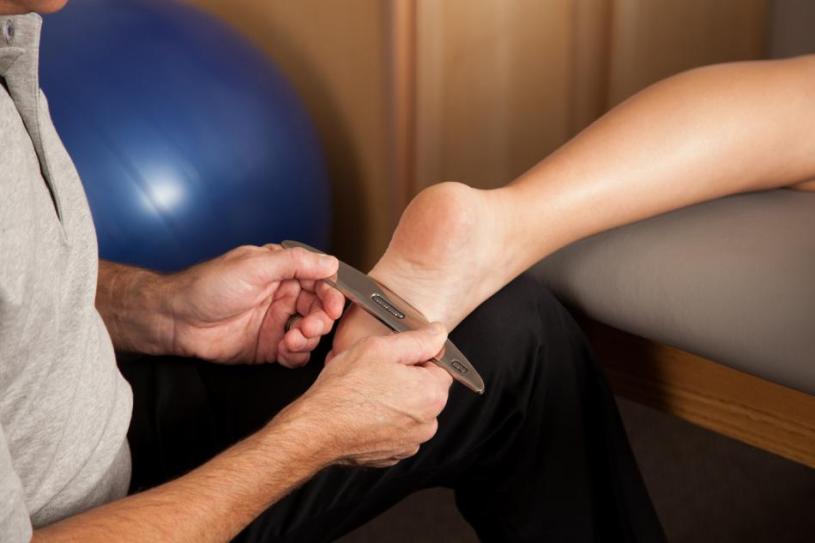Graston is a form of instrument-assisted soft tissue mobilization that is meant to improve tissue quality and muscle tone.
Our bodies adapt to irritating and noxious stimuli in 3 ways: we either (1) remove it, (2) attempt to evade it or develop a form of compensation, or (3) create a barrier.
Think of it this way. (1) If someone is poking you in the forehead, you walk away–(hopefully) rather than using a more violent method. (2) If your arms and legs are strapped to a table and someone repeatedly pokes you in the forehead, you move your head (or compensate in some way) to avoid the irritation. Now, imagine the horrible scenario where your head is also strapped down and you can’t move it. (3) The tapping continues from some sadistic force, and your forehead begins to develop a callus.
When we can’t avoid the negtive stimulus or can’t compensate to decrease pain or damage, we create a thickening or barrier. That barrier is similar to the callus you get on your hands after repetitive wear to the soft tissue of the palm. It is possible to develop a sort of “callus” or thickening anywhere throughout the body, not just in the hands. Sometimes we refer to this callus-like formation as scar tissue. It is simply an increased buildup of collagen in the tissue in an attempt to create a barrier against the noxious stimulus that is causing the tissue inflammation or injury.
Think of collagen as a tiny sticky fiber that acts like glue. It is found naturally throughout  the body and used to build structures such as tendons, ligaments, and fascia. Fascia is also present throughout the muscles and skin because of its strength in structural stability. When your body heals, it uses collagen like a foamy, expansive super glue to fix holes and draw tissue closer together. If you have ever had the pleasure of using a glue like this, you know that it goes everywhere and often expands beyond the boundaries you intended. Likely, you will go back and clean up any excess glue or try to remove some hardened glue that is not allowing intended parts to move.
the body and used to build structures such as tendons, ligaments, and fascia. Fascia is also present throughout the muscles and skin because of its strength in structural stability. When your body heals, it uses collagen like a foamy, expansive super glue to fix holes and draw tissue closer together. If you have ever had the pleasure of using a glue like this, you know that it goes everywhere and often expands beyond the boundaries you intended. Likely, you will go back and clean up any excess glue or try to remove some hardened glue that is not allowing intended parts to move.
Graston technique is the practice of using a dulled metal instrument at a specific angle to treat such a tissue. Like strumming the cords of a guitar, it transfers force to the tissue’s fibers. The fibers either give in response to the force because they are healthy and pliable, or, like a guitar string that is too tight, they resist until they snap. Any excessive collagen that is deposited in the tissue makes it rigid in places, decreasing its ability to be pliable and give. Graston transfers force to the tissue at the sites where a “callus” has formed and breaks up the collagen. Graston on healthy tissue will often feel like nothing or a massage. Graston on unhealthy tissue will sometimes feel gravelly, grainy, and uncomfortable at the sites that have lost their pliability.



I think Graston tools are high-quality devices and definitely have an important role in physical therapy. However, I think that the price clinicians pay for this tool is over the top. There are great alternate tools that function just like Graston and are more affordable, especially for smaller practices. — Great blog, by the way! 🙂
LikeLike
I agree the price for the training and tools is high, it is a business but it does not take away there effectiveness. I have done similar treatment with a variety of items not just Graston’s tools. The training and clinical knowledge are the only things that make a difference not necessarily the tool.
LikeLiked by 1 person
Yep; We use EDGE mobility tools in our clinic and they are great / the patients love it!
LikeLike